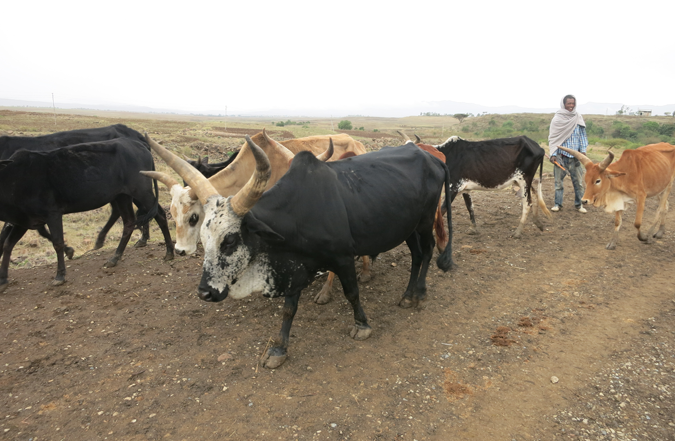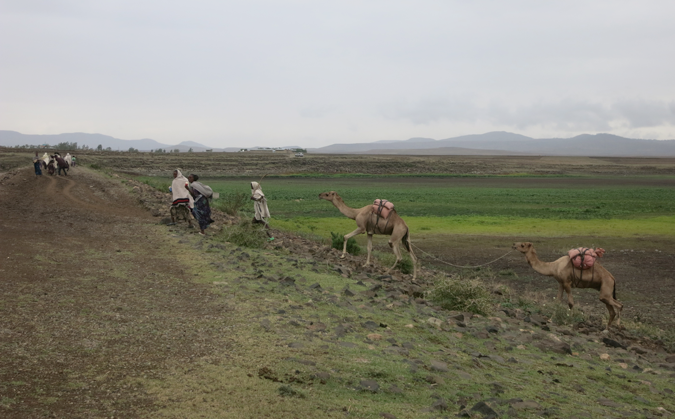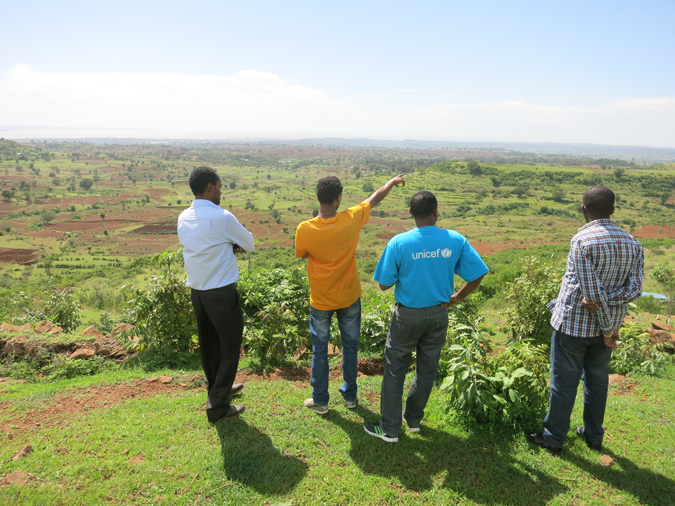A seemingly never-ending line of activity crosses the wall of the Gum Selassa dam to the village of Adi Gudem. It is Saturday and women, men and children are ferrying goods, mainly in the form of livestock, to market. Those that have made the longer journey from the east, climbing up from much drier rift valley of the Afar region, are easily spotted with camels in tow.
Adi Gudem is situated 40km south of Mekele in the Tigray region of the northern Ethiopian highlands at an elevation of 2,100m. The Gum Selassa dam is a micro dam built in the mid-nineties with a 12m high earthen dam wall and a reservoir of around 45 hectares when full. Built to provide water for agriculture, two main channels serve approximately 300 irrigators downstream.
Micro dams such as Gum Selassa are being built in Ethiopia to reduce the variability of water availability for agriculture, but are facing severely reduced life expectancy due to sediment filling up the dams, leaving less and less water storage capacity every year. Vast agricultural land use has long replaced native vegetation in the region, which combined with short duration but high intensity rainfall, contributes to the sedimentation problem.
At the Gum Selassa dam, there is no respite for the camels as they pass by. The reservoir is dry, containing only accumulated sediment which supports a burst of green vegetation, contrasting with the rich brown of the freshly-tilled fields in the surrounds. A number of crops are grown in these fields but the largest by far is teff, a native grain and the staple food of Ethiopia. The grain is ground and fermented then cooked as flat, spongy ‘pancakes’ called injera. Slightly sour in taste but nutritionally high in value and packed with iron, injera forms the base of every Ethiopian meal.
The tilled fields mark the beginning of the wet season with farmers anticipating the first of the rains that come over a short two-month burst. The skies then remain largely dry until the same cycle is, assumedly, repeated the following year. The vast majority of farmers practice subsistence farming. Their small land plots produce enough for feeding themselves but not much, if any, surplus to be sold or stored for years of low yields or crop failure.
Inclusion of cash crops in between the teff fields is being trialled in other parts of Ethiopia through the Learning Watershed project, an initiative of the Water and Land Resources Centre (WLRC), an Addis Ababa University associated institution set up to improve water and land management across Ethiopia. Oxford researchers joined REACH partners UNICEF and WLRC to visit the Aba Gerima Learning Watershed which empties into Lake Tana and is located approximately 500km southwest of Adi Gudem.
Since 2013 the Aba Gerima community has been part of a trial to broaden agricultural diversity, slow down water passage, reduce associated sediment transport through the catchment, and increase subsurface-soil water retention. The ultimate goal of the project is to increase food security, improve livelihoods and reduce sediment runoff to Lake Tana. The initial results are promising: use of in-stream monitoring has shown that water flow has become more stable and land productivity has increased through harvesting crops for both consumption and sale. The next step is the setup of an apiary to bring in another revenue stream and ensure maximum pollination of the increasingly varied crops.
These sites offer an opportunity for the REACH programme to investigate the role of agriculture, land use and management in improving water security for the poor, through a deeper understanding of the impact of sustainable land management on sedimentation, drinking water access and climate change resilience.



